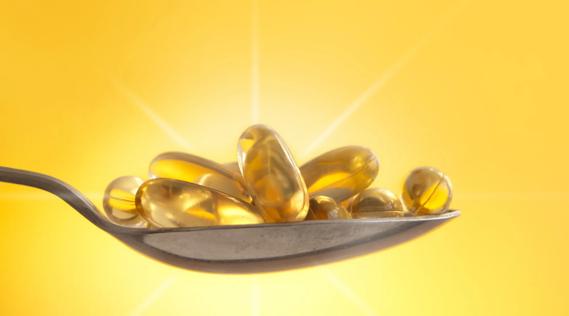It depends on how sick they were

When you get sick, doctors typically advise you to rest, stay hydrated and take it easy until you feel better. For kids who play sports, putting the brakes on activity when they’re sick can be challenging. Athletes feel left out when missing practices and games, and worry about falling behind in conditioning.
Advertisement
Cleveland Clinic is a non-profit academic medical center. Advertising on our site helps support our mission. We do not endorse non-Cleveland Clinic products or services. Policy
Resting up after catching COVID-19 is especially important for kids who play sports. Pediatric cardiologist Akash Patel, MD, explains why not everybody who’s had COVID-19 can go back to playing sports right away — and how athletes can return to competition safely.
Dr. Patel says most kids who’ve had COVID-19 can play sports once again. However, when they return to the court or the field depends on the severity of their symptoms and how they’re affected by the infection.
“The vast majority of kids can come back after their symptoms resolve,” says Dr. Patel. “But if symptoms are more significant, it’s worth getting looked at by a primary care provider before engaging in sporting activities or exercise.”
Fatigue is a common symptom of COVID-19. But the virus can cause a variety of respiratory-related symptoms, including stuffed-up sinuses, chest discomfort and shortness of breath. In more serious cases, COVID-19 can also affect internal organs such as your heart.
“When your kid has the flu or cold, they may have some of those respiratory symptoms. And you might be saying, ‘Well, those are not cardiac symptoms. Those are just flu symptoms,’” notes Dr. Patel. “But COVID is new, and we’re still learning about it.”
Advertisement
Dr. Patel breaks down how to tell when your kid can return to sports, divided by the severity of COVID-19 infection.
In this group are kids who had had mild COVID-19 symptoms. “This is the typical upper respiratory infection,” says Dr. Patel. “Viral symptoms last less than seven days and it doesn’t involve a high-grade fever for more than four days.”
Kids can get back to playing sports “relatively soon,” he adds. In a case like this, an athlete should avoid sports until they finish quarantining or isolating, which is usually five to 10 days, and wait to play until their symptoms have resolved. Dr. Patel advises following up with their primary care provider, too, to make sure they’re healthy and recovered.
The second group is kids who’ve had more significant or moderate COVID-19, and take longer to recover. “Those are kids who had symptoms for more than seven days and had a high-grade fever for more than four days,” Dr. Patel says. “These are also kids who have had to be hospitalized because they’ve developed pneumonia.”
Dr. Patel says it’s best for this group to also let all the symptoms resolve before re-engaging in sports. “That may be a week to two weeks. You’re also likely following up with your primary care provider to make sure things look good before getting back to sports.”
He adds that it’s important to tell doctors if your child has experienced cardiac-related symptoms as part of COVID-19. “If they’ve had chest pain or discomfort, they may get an EKG as part of that evaluation to clear them,” says Dr. Patel. “If that EKG looks normal, then clearly they can go back to sports. If it doesn’t, then they’ll get referred to a cardiologist.”
In rare and serious cases, viral infections such as the flu or COVID-19 can be severe. They might affect multiple organ systems. With COVID-19, kids may have needed to be in the intensive care unit.
As with the flu, COVID-19 can cause myocarditis, or inflammation of the heart. This is a serious condition that requires doctor care and caution before returning to sports.
“Even if those symptoms resolve pretty quickly, we generally recommend that kids don’t play sports for three to six months,” says Dr. Patel. “Although their symptoms have resolved, there can be small changes to the heart that we don’t see on an exam, an EKG or even an ultrasound of the heart.”
The concern is that these changes can put someone at risk for having a life-threatening arrhythmia, or irregular heartbeat, explains Dr. Patel. “We really want to allow for the heart to completely recover from that sort of viral cardiac infection before getting back to full sports.”
Advertisement
Myocarditis can come on quickly. Dr. Patel says a kid can become “quite ill” within 12 to 24 hours of infection onset.
But not every bug a kid catches is myocarditis. The difference is someone has the symptoms of a viral infection — for example, maybe a stomach bug with vomiting, diarrhea and constipation — and cardiac-specific symptoms involving their heart.
“Generally, when you think about myocarditis, it’s usually in the context of having some sort of viral symptoms — so fevers, runny nose, something that would suggest a virus affecting them. And you’re overlaying the cardiac symptoms on top of that.”
Symptoms of myocarditis may include:
A doctor is key to determining what a child is going through, says Dr. Patel. “Usually, when you get evaluated, there are tests that can be done to help determine whether there is myocarditis — or whether it’s just a viral infection making you feel lousy.”
Advertisement
When the heart is infected by a virus, a child may develop additional symptoms that resemble signs of heart failure. “When you have a viral infection of the heart, the heart doesn’t squeeze as well,” explains Dr. Patel. “And so it’s hard for the heart to pump blood.”
These signs include:
For kids who have COVID-19 or any viral infection, it’s important to keep an eye on them and make sure their illness is following the typical course of a cough or cold. “Are they starting to get better?” Dr. Patel says. “Or are they not following the typical course of progression and they’re looking worse? That should always prompt some evaluation.” Worsening symptoms — or symptoms that don’t improve — could be the sign of a serious illness, such as pneumonia.
Where athletes are concerned, it’s more important than ever to rest if they feel a little off and not play through any symptoms of being sick. COVID-19 is still circulating, and it’s not necessarily easy to tell at first whether that tickle in your throat is a cold or something more serious.
Advertisement
“With anything, you need to use your best judgment,” notes Dr. Patel. “But at the end of the day, you want to play sports safely. And the best way to play sports is if you’re 100% healthy. And if you’re not 100% healthy, you won’t be able to perform at your peak ability.”
Take any illness symptoms seriously, and rest and rehydrate. If you have questions, reach out to your primary care provider. And make sure your child is getting better before they reengage.
“Fall season starts soon, and kids are starting to practice for fall sports,” says Dr. Patel. “It’s good to enjoy the summer, make sure kids are healthy — and then make sure they get screened before fall starts so they have a successful school athletic year.”
Learn more about our editorial process.
Advertisement

Covering your mouth when you cough and staying home when you’re sick are a couple ways to help keep yourself and others COVID-free

This vital nutrient supports your health, but its role in COVID-19 prevention and treatment isn’t proven

Studies have shown promising results, but additional research is needed

Infection and inflammation can cause you to lose your voice and have other voice changes until you’re fully healed

A COVID-19 infection can bring on depression or anxiety months after physical symptoms go away

Just like the flu, COVID-19 continues to evolve every year with new and smarter variants

The latest omicron subvariants carry specific mutations that may allow the SARS-CoV-2 virus to be better at evading immune protection

You can work out with mild COVID-19, but not in a gym, and listen to your body and don’t overdo it

If you’re feeling short of breath, sleep can be tough — propping yourself up or sleeping on your side may help

If you fear the unknown or find yourself needing reassurance often, you may identify with this attachment style

If you’re looking to boost your gut health, it’s better to get fiber from whole foods